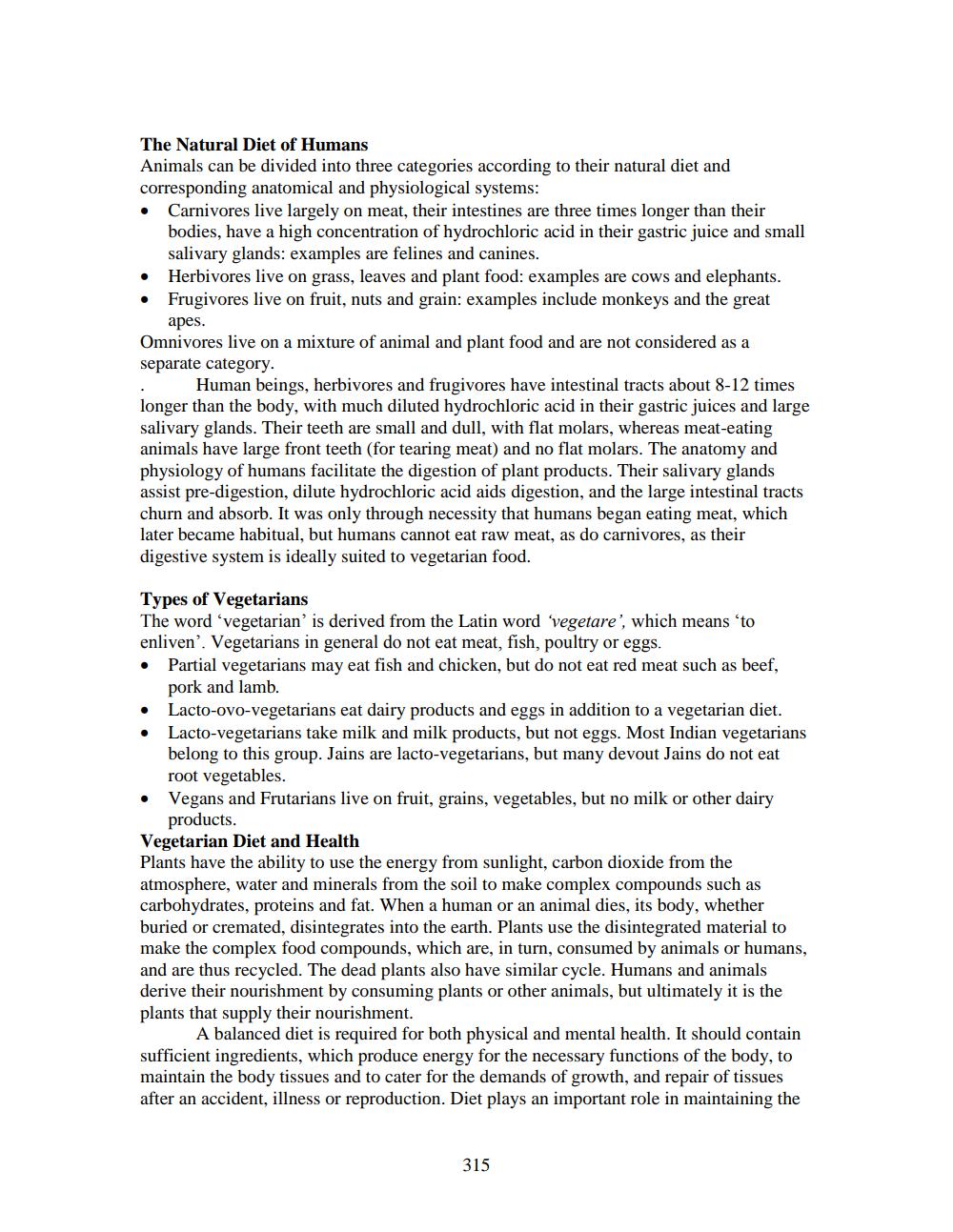________________
The Natural Diet of Humans Animals can be divided into three categories according to their natural diet and corresponding anatomical and physiological systems:
Carnivores live largely on meat, their intestines are three times longer than their bodies, have a high concentration of hydrochloric acid in their gastric juice and small salivary glands: examples are felines and canines. Herbivores live on grass, leaves and plant food: examples are cows and elephants. Frugivores live on fruit, nuts and grain: examples include monkeys and the great
apes. Omnivores live on a mixture of animal and plant food and are not considered as a separate category. . Human beings, herbivores and frugivores have intestinal tracts about 8-12 times longer than the body, with much diluted hydrochloric acid in their gastric juices and large salivary glands. Their teeth are small and dull, with flat molars, whereas meat-eating animals have large front teeth (for tearing meat) and no flat molars. The anatomy and physiology of humans facilitate the digestion of plant products. Their salivary glands assist pre-digestion, dilute hydrochloric acid aids digestion, and the large intestinal tracts churn and absorb. It was only through necessity that humans began eating meat, which later became habitual, but humans cannot eat raw meat, as do carnivores, as their digestive system is ideally suited to vegetarian food.
Types of Vegetarians The word 'vegetarian' is derived from the Latin word 'vegetare', which means 'to enliven'. Vegetarians in general do not eat meat, fish, poultry or eggs. • Partial vegetarians may eat fish and chicken, but do not eat red meat such as beef,
pork and lamb. • Lacto-ovo-vegetarians eat dairy products and eggs in addition to a vegetarian diet.
Lacto-vegetarians take milk and milk products, but not eggs. Most Indian vegetarians belong to this group. Jains are lacto-vegetarians, but many devout Jains do not eat root vegetables. Vegans and Frutarians live on fruit, grains, vegetables, but no milk or other dairy
products. Vegetarian Diet and Health Plants have the ability to use the energy from sunlight, carbon dioxide from the atmosphere, water and minerals from the soil to make complex compounds such as carbohydrates, proteins and fat. When a human or an animal dies, its body, whether buried or cremated, disintegrates into the earth. Plants use the disintegrated material to make the complex food compounds, which are, in turn, consumed by animals or humans, and are thus recycled. The dead plants also have similar cycle. Humans and animals derive their nourishment by consuming plants or other animals, but ultimately it is the plants that supply their nourishment.
A balanced diet is required for both physical and mental health. It should contain sufficient ingredients, which produce energy for the necessary functions of the body, to maintain the body tissues and to cater for the demands of growth, and repair of tissues after an accident, illness or reproduction. Diet plays an important role in maintaining the
315




